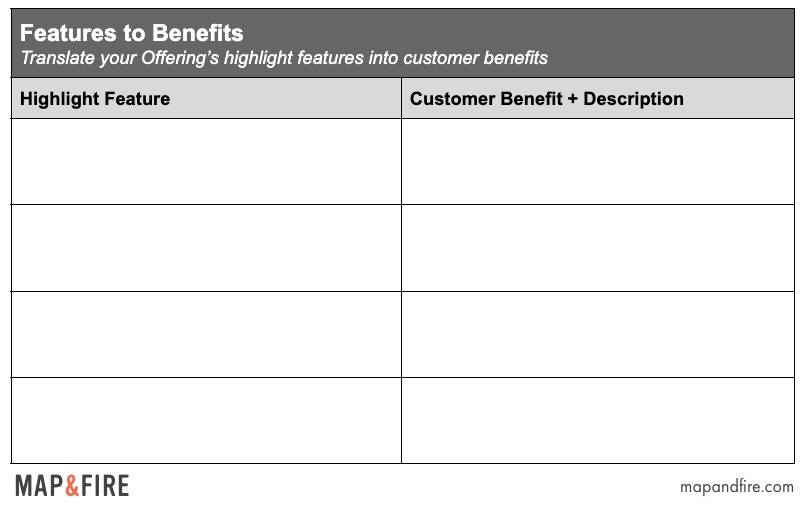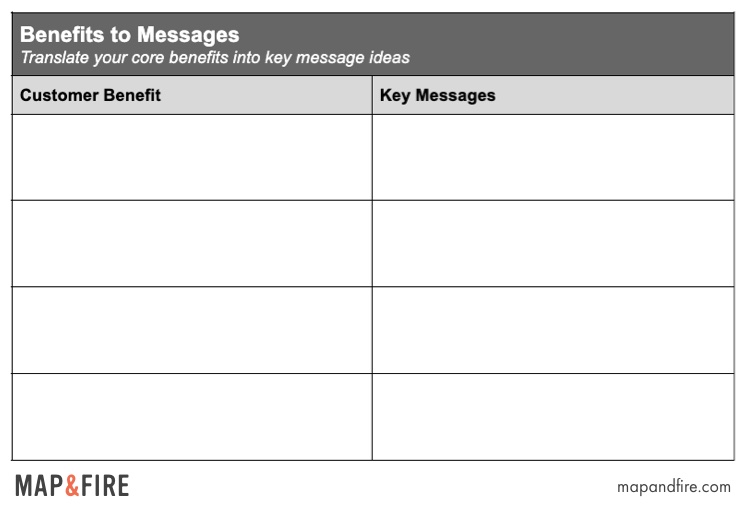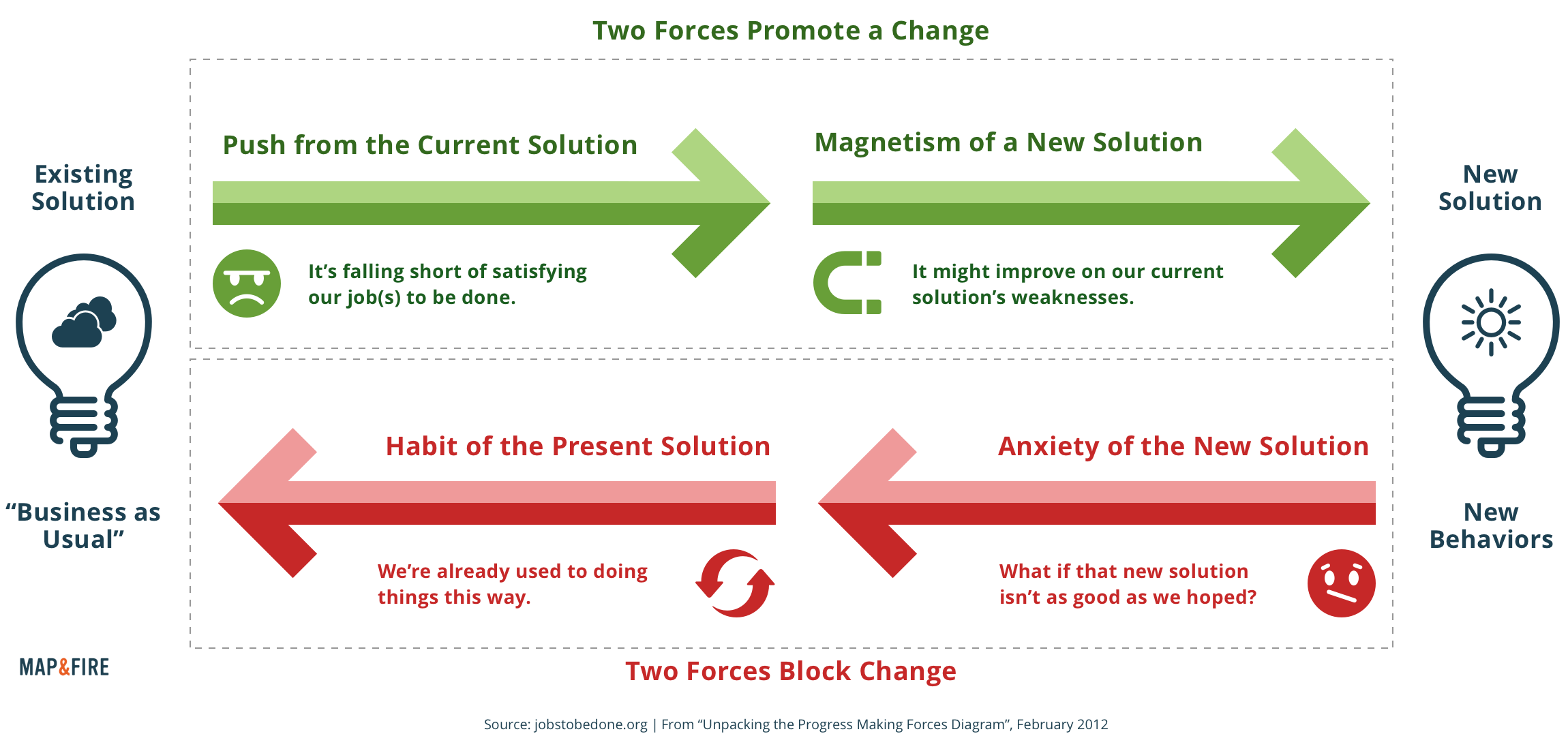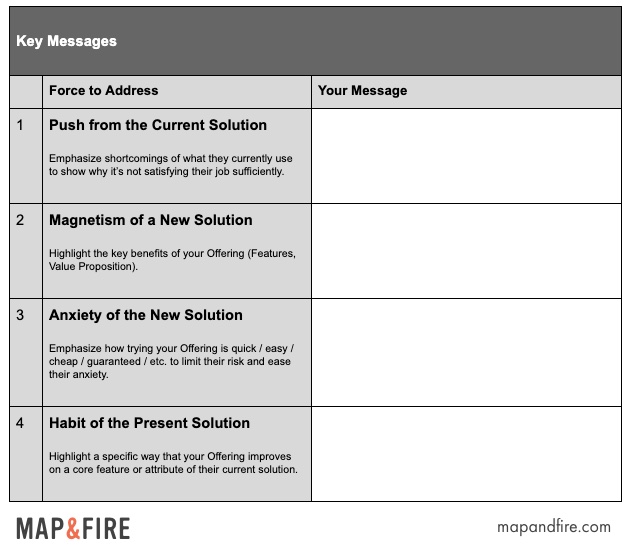Key Messages For Your Brand: Messaging Strategy, Exercises, and Examples
Capture the unique value your brand provides to its target customers in messages that inform all of your marketing and sales.

Our Content Is Featured In:

Join 6,538 folks who receive our latest insights and you'll get immediate access to our 10 page brand strategy workbook!
Instantly analyze your brand
Use our new positioning app, SmokeLadder, to see where your B2B brand is strong, weak, and where it can stand out from the competition.
What Is A Key Message And How Does It Fit In Your Brand’s Messaging Strategy?
Key Message Definition
A key message is a pillar of your brand’s marketing and sales communication. It serves as a concise summary of the most important value your brand provides to its customers.
Collectively your key messages should represent all of the most critical parts of what your brand provides. They serve as the foundation of your overall messaging strategy.
In terms of the hierarchy of elements in your brand, key messages sit in between your positioning and your copywriting:
- Positioning Statement: Captures the full strategic intent of your brand’s position – target customer, competitive differentiation, unique offering benefits
- Key Messages: Distill your positioning into bite-sized ideas that serve as the bridge between your strategy and your marketing and sales copy
- Copywriting: These are the final customer-facing messages you see on the brand’s website, sales materials, ad campaigns, social posts, etc.
Key messages provide shared reference points for everyone working in marketing and sales to ensure consistency across all communication.

6 Qualities Of A Strong Key Message
- Short: Focused on one key aspect of the brand’s value
- Memorable: Taps into a hook or idea that separates the brand from competitors
- Simple: Conveys the message in words that are easy to understand
- Specific: Highlights a unique / distinct quality of the brand
- Repeatable: Constructed in a way that the team can easily share and discuss
- Engaging: Triggers some kind of emotional reaction or connection in people’s minds
Key Message Exercises
To help create key messages for your brand you need to understand what unique value the brand provides.
This first exercise we use consists of two parts that help uncover those unique qualities of your brand’s offering and translate them into key messages.
1) Features to Benefits
- Define the Highlight Features of your offering. These are features that are unique, differentiated, or help your offering stand out in the minds of your customers.
- Now translate each of the highlight features into a benefit statement relative to your target customer.
Example for Lyft:
- Highlight Feature: Automatic payments through the Lyft app
- Customer Benefit: Money exchanges with drivers are safe and painless

2) Benefits to Messages
- Copy over your benefit statements from the previous exercise.
- Now translate each benefit into a key message concept for the brand.
Example for Lyft:
- Customer Benefit: Money exchanges with drivers are safe and painless
- Key Message: Lyft makes sure riders always feel secure and comfortable paying their drivers by handling all money transactions through our app

4 Forces of Change: Key Messages Exercise
The second exercise we use to create key messages comes at it from a slightly different angle. Rather than starting from the basis of your offering and features, we look through the lens of what would motivate your customers to switch from the solution they currently use to solve their problem to your brand’s offering.
To do this we use a framework that explores the 4 forces that affect customers when changing behavior.
The 4 forces framework comes from The Rewired Group. The framework defines two forces that promote customers to change and two forces that block customers from change.
The graphic below shows each of the 4 forces and how they impact customer decisions.
1. Force: Push from the Current Solution:
- The current solution falls short of satisfying our needs
2. Force: Magnetism of a New Solution:
- The new solution improves on the weaknesses of our current solution
3. Force: Anxiety of the New Solution:
- What if the new solution isn’t as good as we hoped?
4. Force: Habit of the Present Solution:
- We’re already used to how we do things with the current solution
Below is a template you can use to work through your brand’s key messages for the 4 forces:
Key Message Examples For Lyft:
1. Force: Push from the Current Solution:
- Messaging Strategy: Emphasize shortcomings of what they currently use to show why it’s not satisfying their job sufficiently.
- Example (Lyft): End the hassle of calling a cab and explaining directions to your driver.
2. Force: Magnetism of a New Solution:
- Messaging Strategy: Highlight the key benefits of your Offering (Features, Value Proposition).
- Example (Lyft): Get safe transportation any time, any place, with a couple taps on your phone.
3. Force: Anxiety of the New Solution:
- Messaging Strategy: Emphasize how trying your Offering is quick / easy / cheap / guaranteed / etc. to limit their risk and ease their anxiety.
- Example (Lyft): Get your first ride delivered to you within minutes for less than the price of a cab.
4. Force: Habit of the Present Solution:
- Messaging Strategy: Highlight a specific way that your Offering improves on a core feature or attribute of their current solution.
- Example (Lyft): Stop guessing which cab company is the best in your area and use a service that works great everywhere.
Questions For Developing Key Messages
Here are 4 questions to consider as you refine and iterate on your brand’s key messages:
- How can you speak to the core benefits you provide in an emotionally engaging way?
- How might you describe your core benefits to a 6th grader? Or to a parent (or grandparent) who has no knowledge of your job or industry?
- Can you describe the benefits that you provide without relying on industry jargon or technical terminology?
- What’s one idea related to the benefits you provide that will pique someone’s interest enough to keep them on your website and continue reading?
Get Help Defining Your Brand’s Key Messages

Free Brand & Marketing Workbook
Get immediate access to our 10 page workbook to help you define your Core Purpose, Vision, and Core Values, along with resources for Brand Archetypes, Tone of Voice, Messaging, and more!

Hands-on Brand Strategy Help
Transform your best business thinking into an actionable, shareable, growth-oriented guide. Click below to learn about the Brand Guidebook process.




